|
DAVINCI - LEDA and the SWAN - PAGE 2
- The castle town.
|
Archimedes and the Golden Crown |

Castle dark |
- The ancient Greek city of Syracuse was at war with
Carthage for almost a hundred years.
- At the same time,
successive rulers fought each other for the throne.
My crown I am, but still my griefs are mine. You may my glories and my state depose but not my griefs; still am I king of those.
(Shakespeare, Richard II)
|

Castle Hiero lite |
- In 275 BCE, the Syracusan troops, tired of the
inefficiencies of their leaders and their internal strife,
elected commanders from their own ranks.
- One of these
was a young general named Hiero.
A good heart 'is worth gold.
(Shakespeare)
|

Castle
new day
Archimedes mirror |
- Hiero had an outgoing personality and talent for leadership and politics.
- He managed, through his connections, to enter the city and take over its government.

King |
- His takeover went so smoothly and efficiently, that the citizens of Syracuse, who
were usually wary of soldiers choosing their own commanders,
allowed this to happen.
Their idols are silver and gold,
The work of man’s hands.
(Psalm 115:4)
|

Castle turn |
- After a great battle in 265 BCE, in which Hiero led the Syracusans to victory against their enemies, the people of Syracuse chose Hiero to be their king.
- The best rulers are kings, the worst rulers are also kings.
- The Israelites chose a king instead of the Most High
(against his advice).
But seek first his kingdom and his righteousness, and all these things will be given to you as well.
(Matthew 6:33)
|

Castle reflect |
- Grateful to the gods for his success and good fortune, and to show his gratitude,
King Hiero II decided to place in a certain temple, a golden crown in their honor.
As for the idol, a craftsman casts it,
A goldsmith plates it with gold,
And a silversmith fashions chains of silver.
(Isaiah 40:19)
|
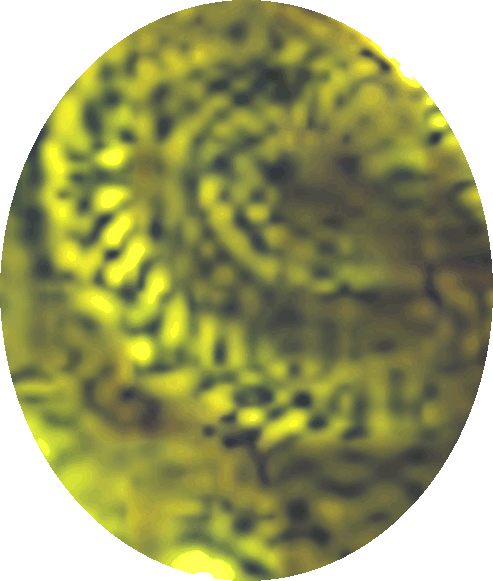
Golden crown |
- The crown was to be shaped like a laurel wreath.
- King Hiero II weighed out the exact amount of gold required, and appointed a goldsmith to
create out of the gold, a wreath worthy of the gods.
- The goldsmith
went to work, and on the appointed day, he delivered an exquisitely wrought crown, shaped
like a laurel wreath, exactly as the king had requested.
- The wreath seemed to
be the exact weight as the gold measured out by the king for the
project.
- King Hiero II was pleased, and paid the goldsmith handsomely
(with taxpayer money),
who, after receiving payment, went away.
To gild refined gold, to paint the lily... is wasteful and ridiculous excess.
(Shakespeare)
|

Castle town gold |
- King Hiero II made preparations for the ceremony to place the wreath in the temple that he had chosen.
- A few days before the ceremony, hearing rumors that the goldsmith had cheated him, and
crafted a crown not of pure gold, but of gold that had silver mixed in it,
King Hiero II was furious.
- It was suspected that the goldsmith had replaced some of the gold that Hiero had given him, with an equal weight of silver.
- There was also some suspicion that the color of the
crown was not the same as the original gold provided by the
king.
All that glisters is not gold; Often have you heard that told.
(Shakespeare, Merchant of Venice)
|

Castle town dusk |
- King Hiero II was furious to learn that he might have been tricked,
but he was a fair-minded man and wanted to find the truth before punishing the goldsmith.
- If the goldsmith had indeed cheated him and mixed silver into the gold, then the goldsmith would have to be punished.
- Additionally, the crown could no longer be given as an offering to the gods.
- But if the goldsmith had been honest, then the crown
remained what it had been intended to be, a sacred offering,
and it would be placed in the temple as planned.
- It was important that Hiero find the truth quickly,
before the day of the ceremony, and without damaging the crown
in any way.
Th’ abuse of greatness is when it disjoins remorse from power.
(Shakespeare, Julius Caesar)
|

Castle town cleanse |
- King Hiero II believed there was only one man in
Syracuse capable of discovering the truth and solving his
problem; his cousin, Archimedes, 22, who was
already renowned for his work in mathematics, mechanics and
physics.
- Archimedes studied the problem for a long time;
one day, deep in thought, young Archimedes walked to the public baths for his daily bath.

Archimedes and his tub |
- Still thinking about the problem with the golden crown, he went through the rituals of cleansing and washing,
stepping into a tub of cool water for his final rinse.
-
As he lowered himself into the water, the water in the tub
began to spill out over the sides, and he noticed that the more his body sank
down into the water, the more water ran out over the sides of the tub.
- Archimedes realised that he had found the solution to Hiero’s problem
which is now called the Archimedes’ Principle and
concerns the theory of buoyancy.
Wash and make yourselves clean. Take your evil deeds out of my sight; stop doing wrong.
(Isaiah 1:16)
|

Castle town darkness |
- Archimedes was so excited by his discovery that he jumped out of the tub and ran all the way home without remembering to put his clothes on; shouting ‘Eureka, Eureka!’
which in Greek means, ‘I have found it! I have found it!’
As we know, Archimedes was the person who said eureka first, but he was not the last. Ever since this first exclamation, the word has become a popular form of expressing a breakthrough. The word has become so popular, in fact, that the term, "the eureka effect" has been coined among scientists.
The eureka effect describes the human experience of suddenly understanding something that was previously deemed impossible to understand.
(twinkl.com)
|

Castle town new dawn |
- Archimedes had found was a method for measuring the volume of an irregularly-shaped object.
- He realized that when you place an object in water, an
equal volume of water would be displaced, simple.
- This
meant that he could measure the total volume of the gold in
the crown by placing the crown in a measure of water and
letting the water displace, then measuring the volume of the
water remaining once the crown was removed.
- Archimedes used his discovery to solve the king’s problem.
Thou shalt drink also water by measure, the sixth part of an hin: from time to time shalt thou drink. (Ezekiel 4:11)
|

Castle town new day sun |
- Archimedes, a physicist, knew that because gold was denser than silver,
a piece of gold weighing a certain amount would be smaller
than a piece of silver weighing the same.
- This meant that if the goldsmith had stolen some of the gold the king had given him, and replaced it with an equal weight of silver in the crown, then the total volume of the gold/silver crown would be greater than the volume of the original amount of gold.
In measure, when it shooteth forth, thou wilt debate with it: he stayeth his rough wind in the day of the east wind. (Isaiah 27:8)
|

Castle town new day dew |
- The simplest method of determining the volume of the crown would have been to melt it down, and measure its volume,
but King Hiero II had given strict instructions that the crown was not to be damaged.
- This is where Archimedes’ discovery came in handy.
Your dead will live;
Their corpses will rise.
You who lie in the dust,
awake and shout for joy,
For your dew is as the dew of the dawn,
And the earth will give birth to the departed spirits. (Isaiah 26:19)
|

Castle town churn |
- First, Archimedes took a lump of gold and a lump of silver, each weighing exactly the same as the crown, and filled a large vessel with water to the brim, precisely measuring how much water was contained in the vessel.
- He then gently lowered the lump of silver into it and
this caused as much water to spill out over the sides of the
vessel as was equal in volume to the lump of silver.
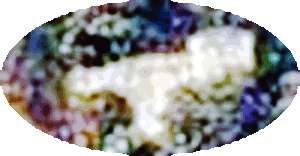
Lump of silver on scale |
- Archimedes
then took the lump of silver out of the water and carefully measured the amount of water left in the vessel, thus arriving at the amount of water that had been displaced by the silver.
- He repeated the same process with the gold in order to
measure the amount of water displaced by the gold.
The king’s wrath is like the roaring of a lion,
But his favor is like dew on the grass. (Proverbs 19:12)
|

Castle town sunrise |
- Archimedes discovered that a smaller quantity of water had been displaced by the gold than the silver, and the difference was equal to the difference in volume between a lump of gold and a lump of silver of the same weight.
For with what judgment ye judge, ye shall be judged: and with what measure ye mete, it shall be measured to you again. (Matthew
7:2, Jesus)
|

Castle town midnight |
- Archimedes filled the bowl with water to the brim a final time, taking care to fill it with exactly the same amount of water as
earlier.
- This time he lowered the crown into the water.
- He knew that if the crown was pure gold, its volume would be the same as that of the lump of gold,
which weighed the same as the crown.
- If the goldsmith had replaced some of the gold with silver, then the volume of the gold/silver crown would be greater than the volume of the gold, and so the crown would displace more water than the gold,
simple.
Fill ye up then the measure of your fathers. (Matthew
23:32)
|

Castle town before dawn |
- Sadly, Archimedes found that the crown did, in fact displace more water than the lump of gold of equal weight.
- He quickly came to the conclusion that the crown was not pure gold, and that the goldsmith had indeed mixed some silver (or other metal) into the gold to cheat the king.
We must not make a scarecrow of the law, setting it up to fear the birds of prey, and let it keep one shape till custom make it their perch and not their terror.
(Shakespeare, Measure for Measure)
|

Castle town waking |
- This story of Archimedes and the golden crown is found in
De Architectura or The Ten Books of Architecture, written by the Roman architect Marcus Vitruvius Pollo some time during the first century BCE.
This story is not found anywhere among the known
works of Archimedes, though in his book, On Floating
Bodies, he gives the principle known as Archimedes’
Principle, which states that a body partially or
completely immersed in a fluid is buoyed up by a force
equal to the weight of the fluid displaced by the body.
(longlongtimeago.com)
|

Castle town wakens |
- The method that Vitruvius claims was used by Archimedes, though correct in theory, has been criticised by scientists as too difficult to implement with
any amount of accuracy.
- This is because that the amounts of gold and silver,
such as contained in a crown, would be so small that the difference in their volumes, and the consequent difference in the amount of water displaced, would be too small to measure with precision.
But unto every one of us is given grace according to the measure of the gift of Christ.
(Ephesians 4:7)
|
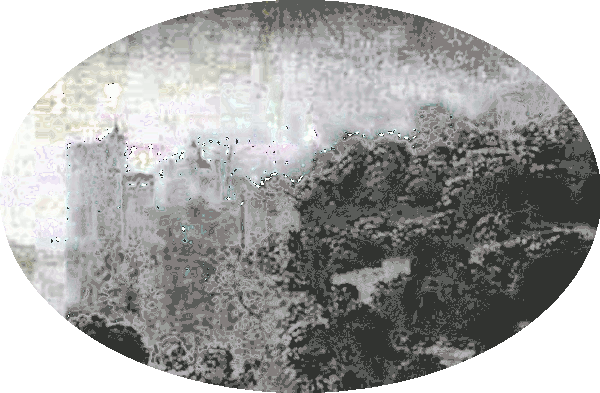
Castle town fog |
- More than 1,800 years after Archimedes helped King Hiero
II detect the goldsmith’s fraud, another young man,
Galileo Galilei, also 22 years old, Italian mathematician,
physicist and astronomer, pondered the same problem.
- In 1586, Galileo wrote a short treatise called
La Bilancetta, or The Little Balance, in
which he expressed his skepticism of Vitruvius’ story and
theorized that Archimedes was able to employ his own ideas; the Archimedes Principle, and on Archimedes’ work on levers,
to come to an accurate analysis of the weight of the metals in
the crown.
Archimedes made a striking observation:
‘Give me a lever long enough and a fulcrum on
which to place it, and I shall move the world.’ This
is the essence of all great successes in politics and
war: to identify and to move the least in order to
change the most.
(Gwythian Prins, Archimedes' Fulcrum)
|

Castle town moss |
- Galileo believed that Archimedes, rather than using
water, would have used a set of scales instead.
- By placing the
crown on one side of the scale, and an equal amount of gold on
the opposite side (to the original amount provided by the
king), he could simply dip the scales in a measured amount of water.
- If the
crown sank lower into the water than the gold, that would mean
the crown was not pure gold and that the king had been
deceived.
- This is because, in physics, the denser body, which has a smaller volume for the same weight, would sink lower in the water than the less dense one.
Honest weights and scales are the Lord’s;
All the weights in the bag are His work.
(Proverbs 16:11)
|

Castle town ash |
- Archimedes was famous more for his work in his inventions, which were many,
than for his work in mathmatics.
- His inventions included; compound pulley systems, a planetarium showing the motions of the sun, moon, and planets as viewed from the earth.
- Additionally, a mechanism known as the Egyptian or Archimedes Screw, for raising water, which was used for by the Egyptians to raise water from streams and canals to irrigate their fields and by the Romans to pump water out of mines and the holds of ships.
- He designed and built several war machines that were used in the defense of Syracuse against its enemies.
The first Russian screw-propelled warship was the Baltic Fleet steam frigate Arkhimed (named for the ancient Greek inventor Archimedes.) Launched in 1848, she was wrecked in 1850.
(usni.org)
|

Castle town dissolve |
- From references to him in the writings of other authors,
it's known that Archimedes wrote several more works, which have not survived;
including what is known as the Cattle Problem, which asks us to calculate the number of cattle owned by the Sun God Helios, starting from a few simple relations.
- Though no original work by Archimedes regarding this problem has survived, this problem was finally fully solved in 1965, with the help of computers.
I will give you the keys of the kingdom of heaven; whatever you bind on earth will be bound in heaven, and whatever you loose on earth will be loosed in heaven.
(Matthew 16:19)
|

Castle town rubble |
- Plutarch wrote that Marcellus was greatly disturbed when he heard of Archimedes death, and declared the soldier who killed him ‘a murderer.’
My Crown is in my heart, not on my head:
Not deck'd with Diamonds, and Indian stones:
Nor to be seen: my Crown is call'd Content,
A Crown it is, that seldom Kings enjoy.
(Shakespeare, King Henry VI)
|

Castle bridge |
|
-
Archimedes was killed by a Roman soldier while drawing a mathematical diagram in the sand on the floor of his home.
-
His last words would have been
Noli turbare cirulos meos (Don’t disturb my circles)
although that was only documented because of what he asked to
be written on his tomb.
Jesus said to them, “A prophet is treated with honor everywhere except in his own hometown, among his relatives, and in his own house.”
(Mark 6:4)
|
Moral of the story!
This king was a really nice guy, everyone liked
him but he was wasting the taxpayer monies on false
icons (his crown).
Just think of how much easier and less stressful
it would be for the townspeople if none of this had
happened.
Certainly shows you why you should not pay for
many taxes (your federal taxes fund fake wars and
keeps all the demonic ghouls in 'power'). You get more
bang for your buck with your local taxes that's for
sure.
If the king wants this, let him pay for it out of
his own wallet.
We are heirs to the kingdom of Heaven and already
have a king.
And, BTW, why didn't someone just weigh the crown
and they could tell right away it was heavier than the
gold the king supplied (proving another heavier metal
had been added). Although, you can't deny that his
solution was very handy for determining the volume of
odd shapes.
|

Archimedes elephant |
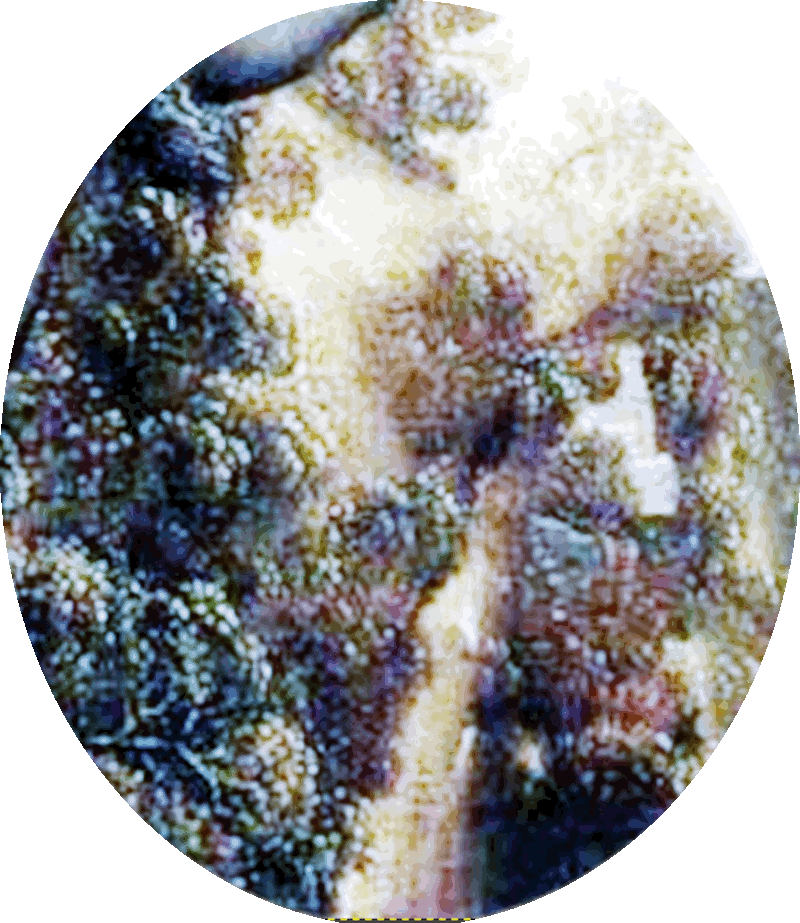
Op |

Op tie |
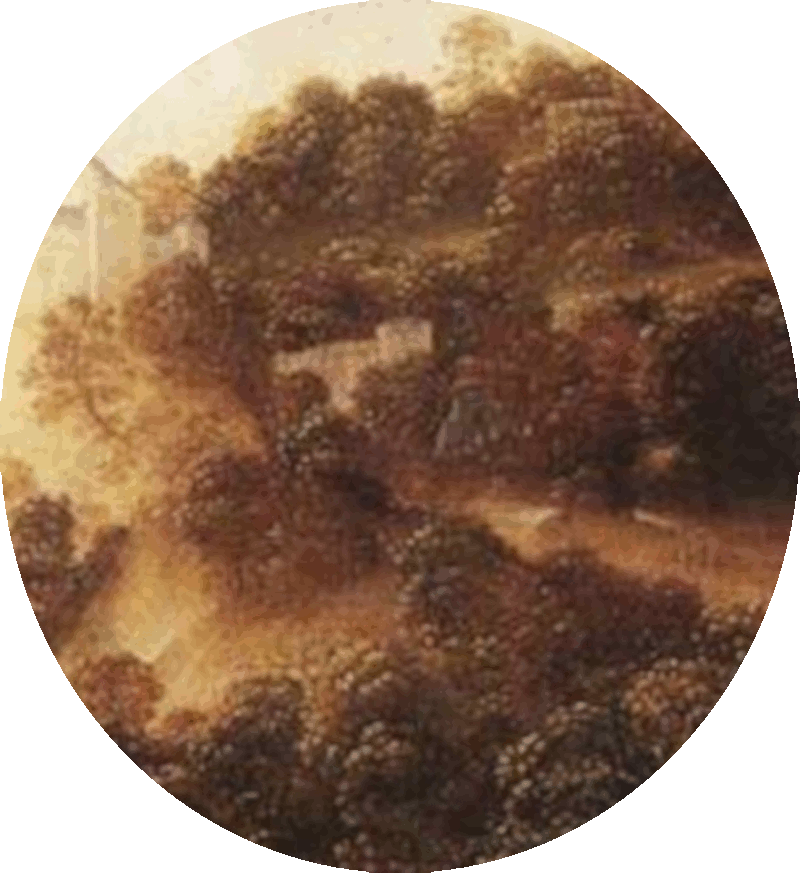
Castle hill |

Small Aztec |

Castle recovery
Archimedes hidden sphere and
cylinder |
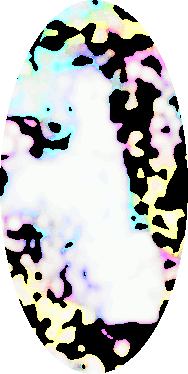
Castle ghost |
|
|
As every divided kingdom falls,
so every mind divided between many studies confounds and saps itself.
Leonardo DaVinci

|

